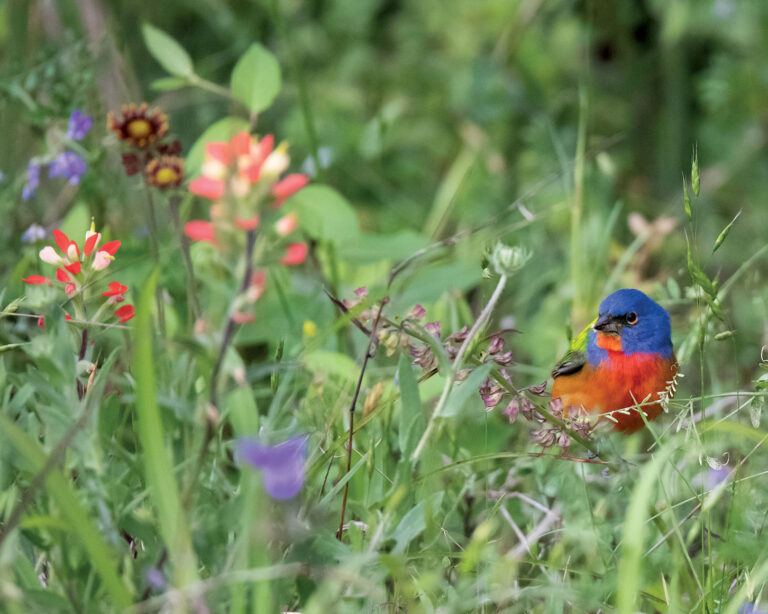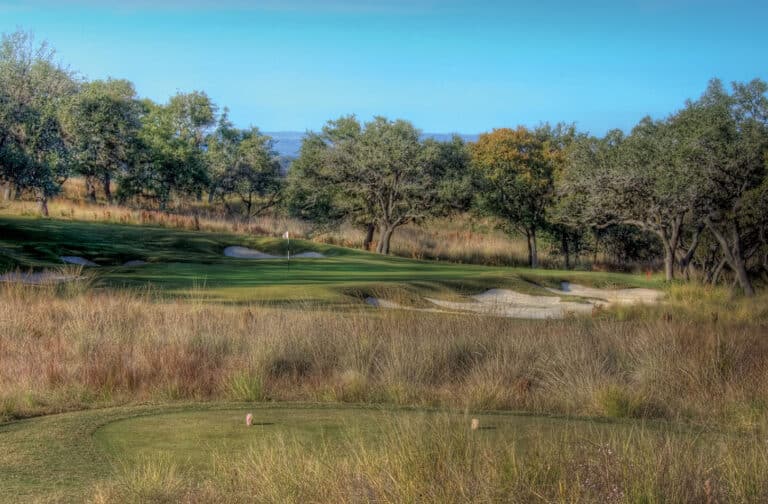TURF CARE AND THE HOMEOWNER
By: Mark Semm
Spring is a beautiful time in the Texas Hill Country. Wildflowers are blooming, oaks are budding new leaves, and the weather brings the outdoor activities to full steam. I’d like to share some ideas and tips we use on the golf course to help your lawn and landscape reach its full potential. These topics include irrigation audit and repair, aerification and verticutting, and finally a fertilizer and pre-emergent herbicide application.
Now is the time to have your irrigation system audited by a licensed landscape irrigator and make necessary repairs. Do not wait until the typical hot, dry summer sets in as irrigation contractors usually have a long list of procrastinators! An irrigation audit consists of checking all valves for proper operation, inspecting sprinklers and nozzles for proper dispersion, and ensuring the proper run times for each individual station. We have our audit complete by the end of March and continue to monitor it daily throughout the year. The golf course irrigation system consists of well over 2,200 individual sprinklers, countless miles of pipe and wire, 7 pumps and motors, 36 satellite controllers and a central computer in our office to operate it! An irrigation system audit will help ensure water is being applied efficiently and to the proper areas without waste. A properly functioning irrigation system will help your lawn and landscape get through short-term droughts the hill country is prone to. Check out www.allianceforwaterefficiency.org/ for more resources regarding a properly functioning irrigation system and the efficient use of water.
Next up is spring aerification and verticutting. Aerification is the process of using a specialized machine to remove a plug of soil and organic matter. This process creates a better environment for your lawn to grow and flourish by reducing compaction, providing air to the soil, and gives a place for water and fertilizer to infiltrate. Verticutting is the process of using a specialized mower with cutting blades that are vertical to the soil surface to removed dead or decaying plant material. Verticutting thins your lawn of this unwanted material, provides a place for new grass to grow and cuts new growing points. Many landscape contractors will offer these services or if you are a do-it-yourselfer these machines can be rented from many equipment rental companies.
Most homeowners on the Ranch have either zoysiagrass or bermudagrass lawns. These are warm season grasses that thrive in warmer weather from late April/early May through about mid-September. I would recommend aerifying and verticutting these grasses late April or early May and again in early September. The golf course utilizes zoysiagrass for tees and fairways and bermudagrass for the rough. We aerify and verticut the fairways, tees, and roughs several times throughout the summer months. The putting greens on the golf course are bentgrass. Bentgrass is a cool season grass and thrives in cooler weather from mid-October through about mid-May. We aerify and verticut the greens in March and October. Aerifying and verticutting are two procedures that will help the long and short-term health of any turfgrass.
Last but not least is a fertilizer and pre-emergent herbicide application. Spring is a great time to feed your lawn and apply a pre-emergent herbicide to keep away those pesky weeds. A good basic starter fertilizer such as a 19-25-12 (percentage of nitrogen-phosphorus-potassium) with a pre-emergent herbicide included is all you need. Any local lawn and garden center will carry a variety of fertilizers, herbicides and spreaders. Scotts Fertilizer Company has some great products and spreaders that make it easy to apply the proper amount of fertilizer and herbicide.
A general rule of thumb is to apply 1 pound of slow release nitrogen for every 1,000 square feet of lawn in mid-April and again in mid-August for warm season grasses. This is the same time we apply our fertilizer and herbicide to the entire golf course except the greens. We spray liquid fertilizer on our greens in very small amounts (called spoon feeding) every 14 days. This allows a more controlled growth of the greens and a more efficient response to excesses and deficiencies of their fertility levels. I could write a novel regarding the countless fertilizers and herbicides available, proper amounts to apply and proper timing. A good resource for homeowners is the Texas AgriLife Extension Service. Their website has countless articles and publications for a healthy lawn and landscape.
These topics only scratch the surface of turf and landscape maintenance. There are many resources available to expand your knowledge of the various facets of plant care. Hopefully these few topics discussed help your lawn and landscape thrive this growing season. Enjoy the beautiful spring weather of our Texas Hill Country!






